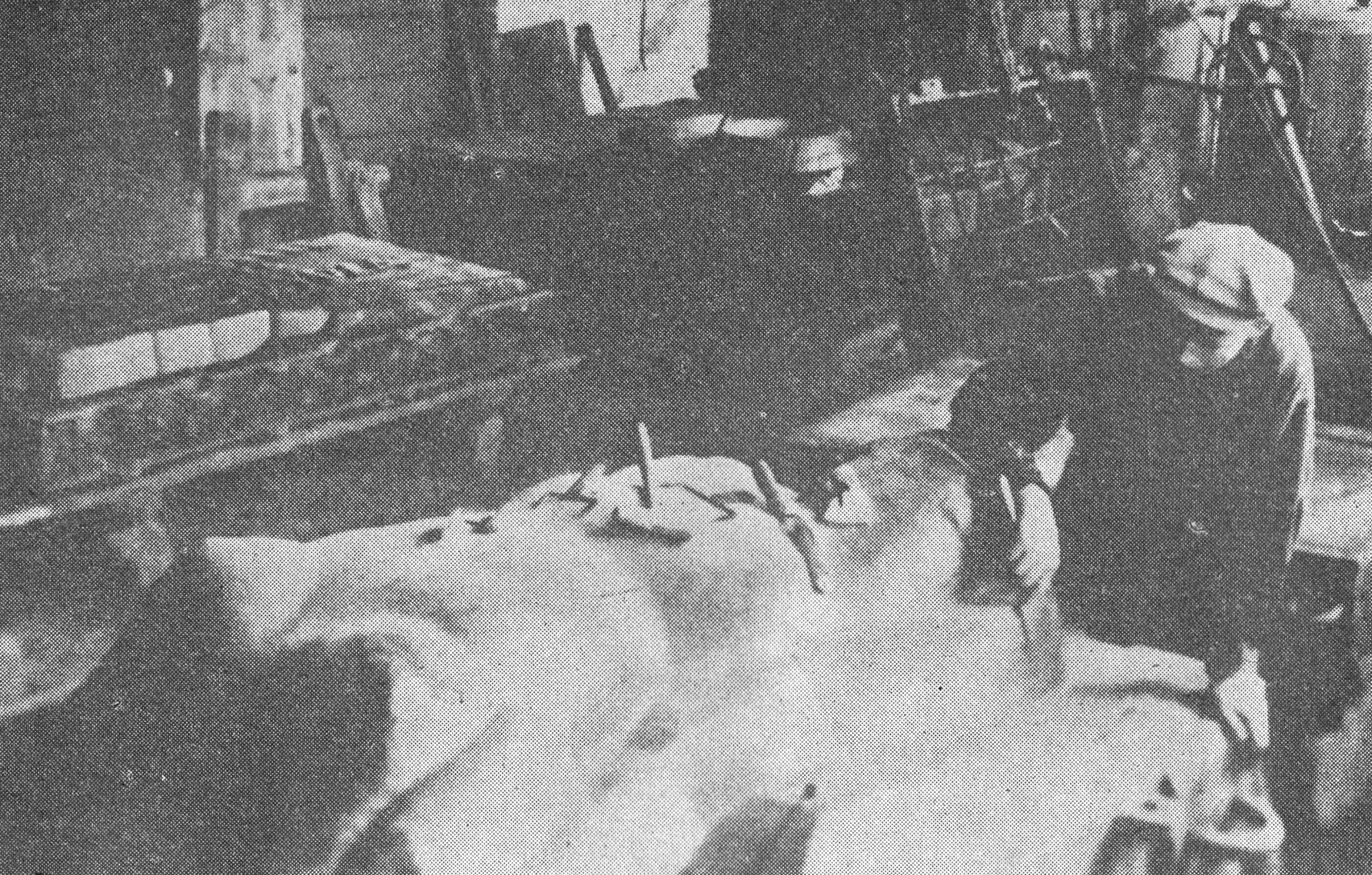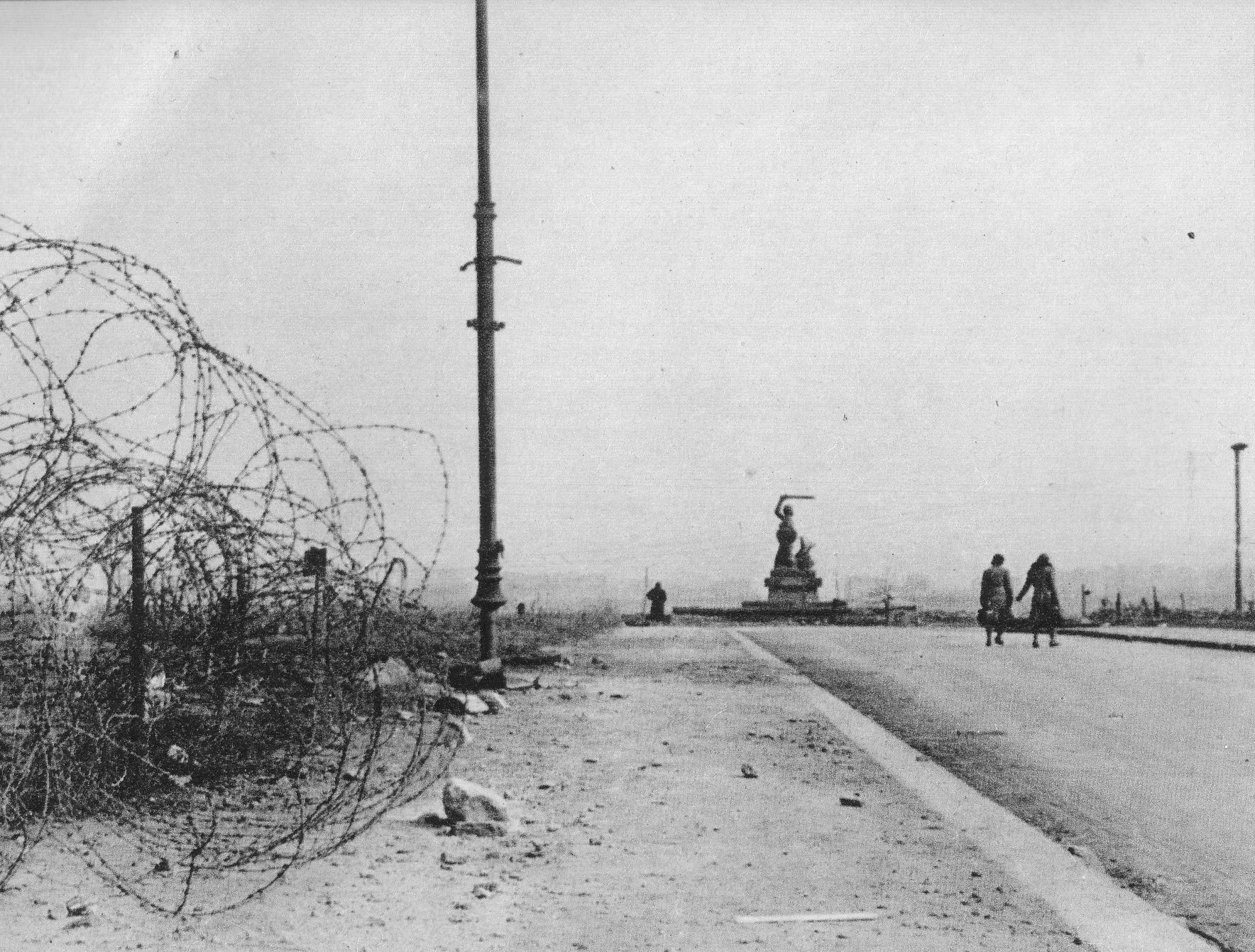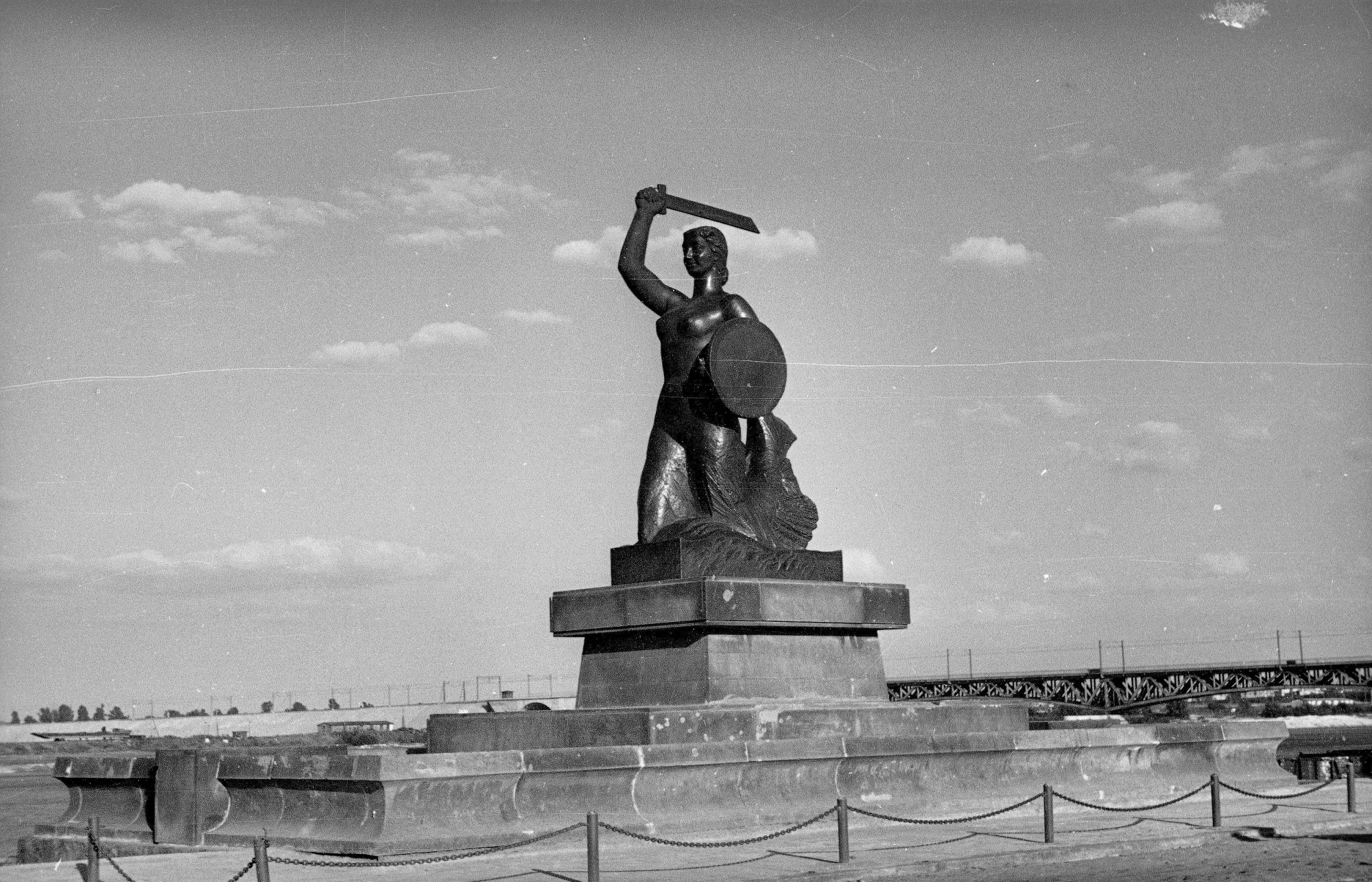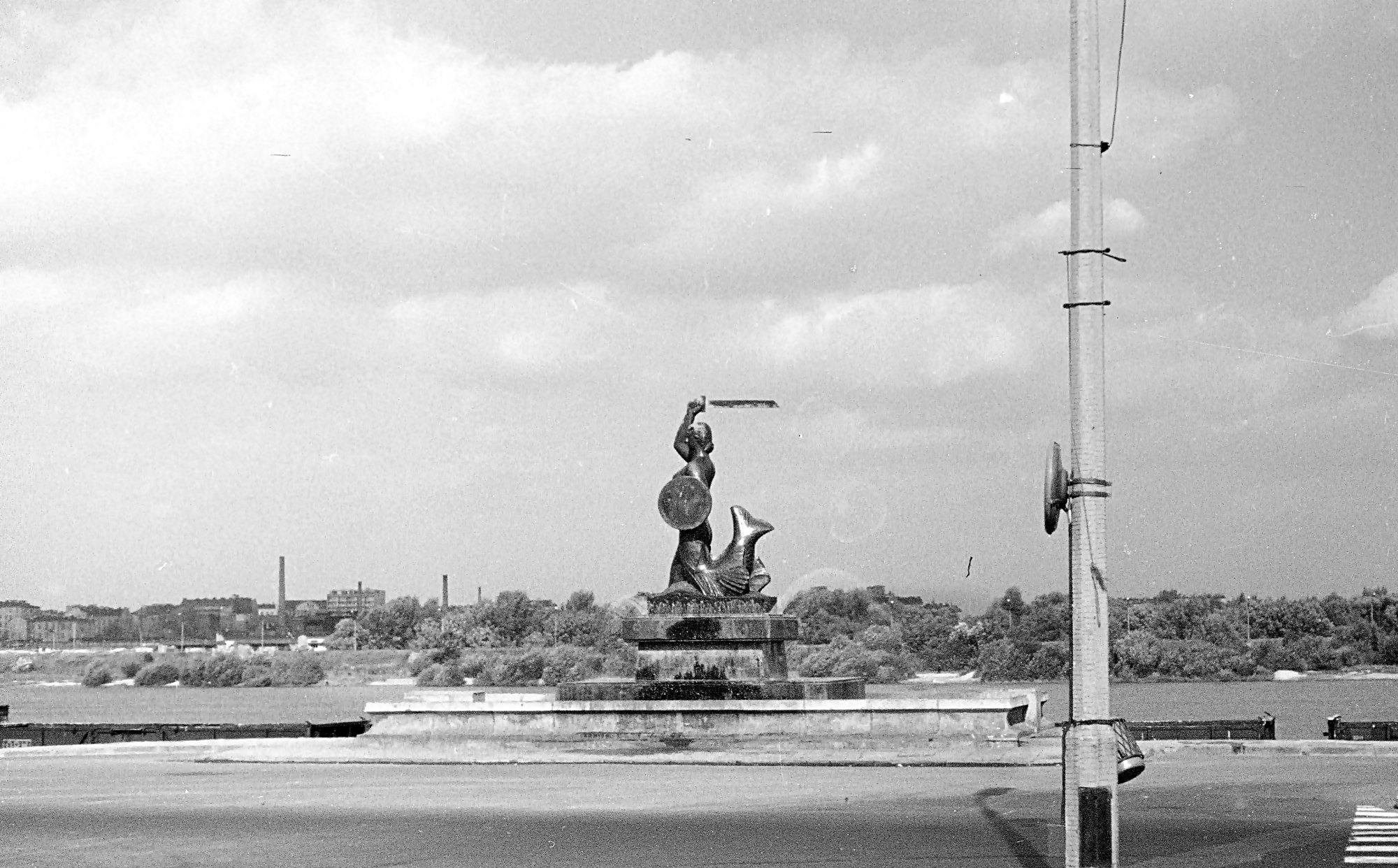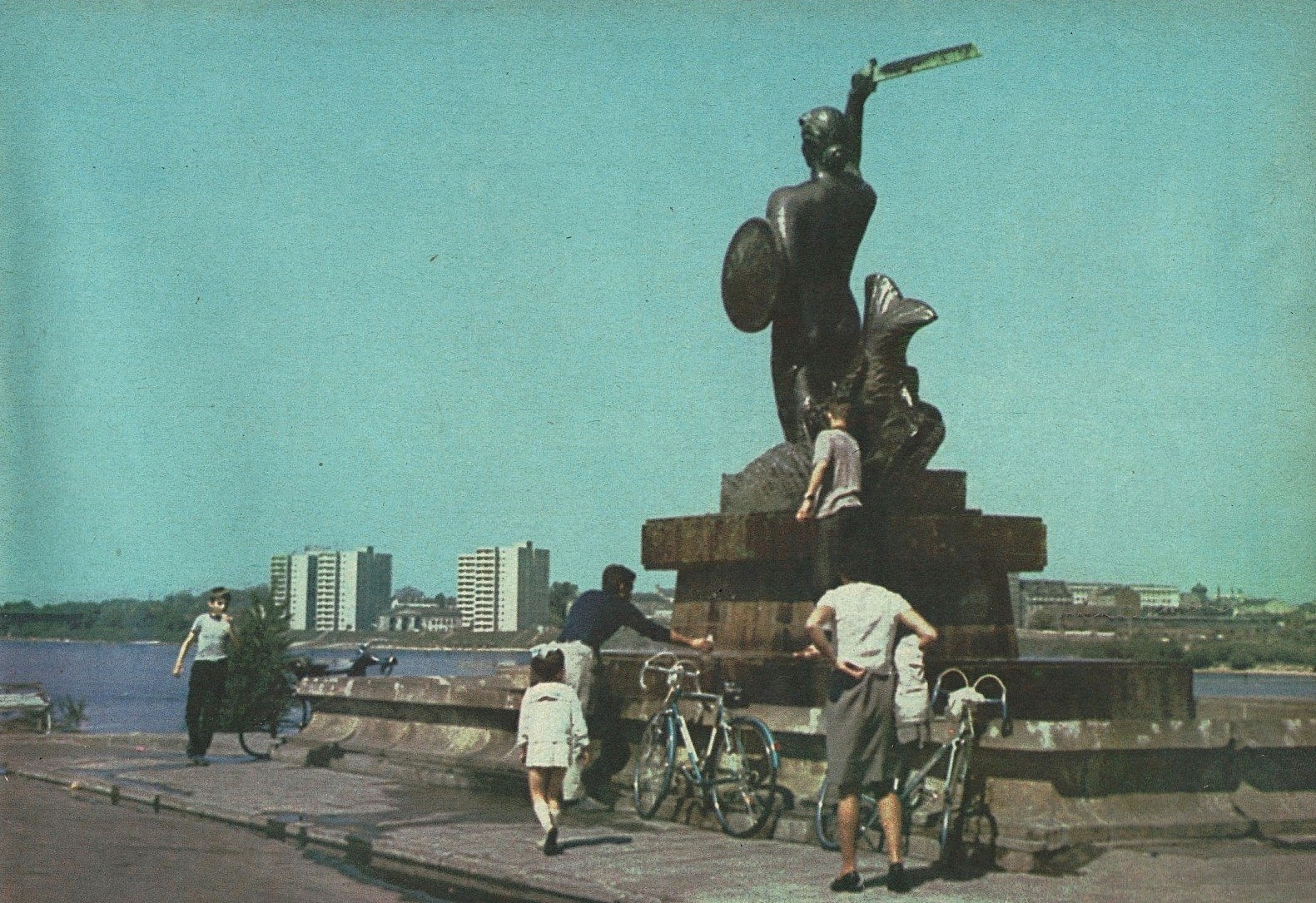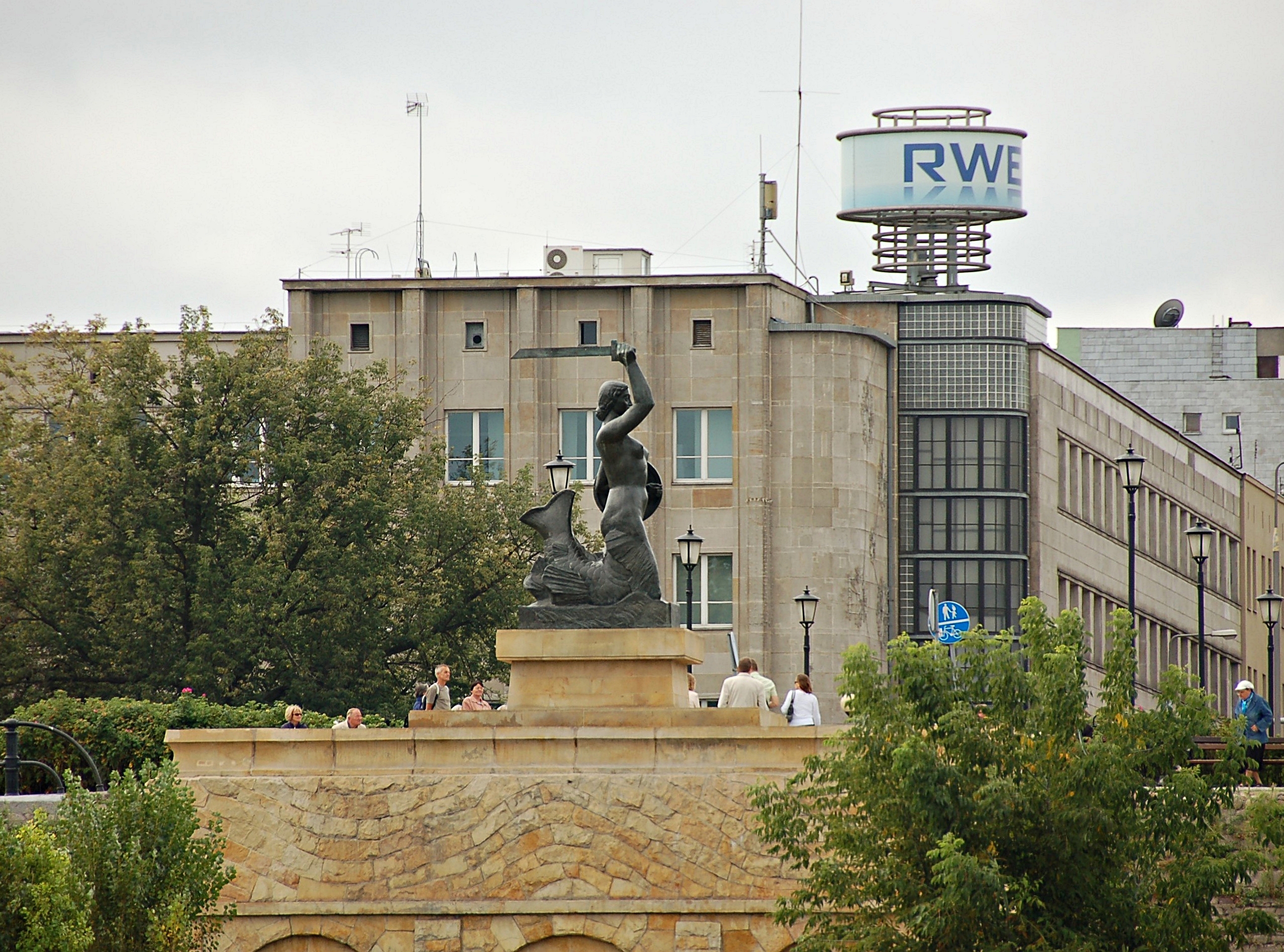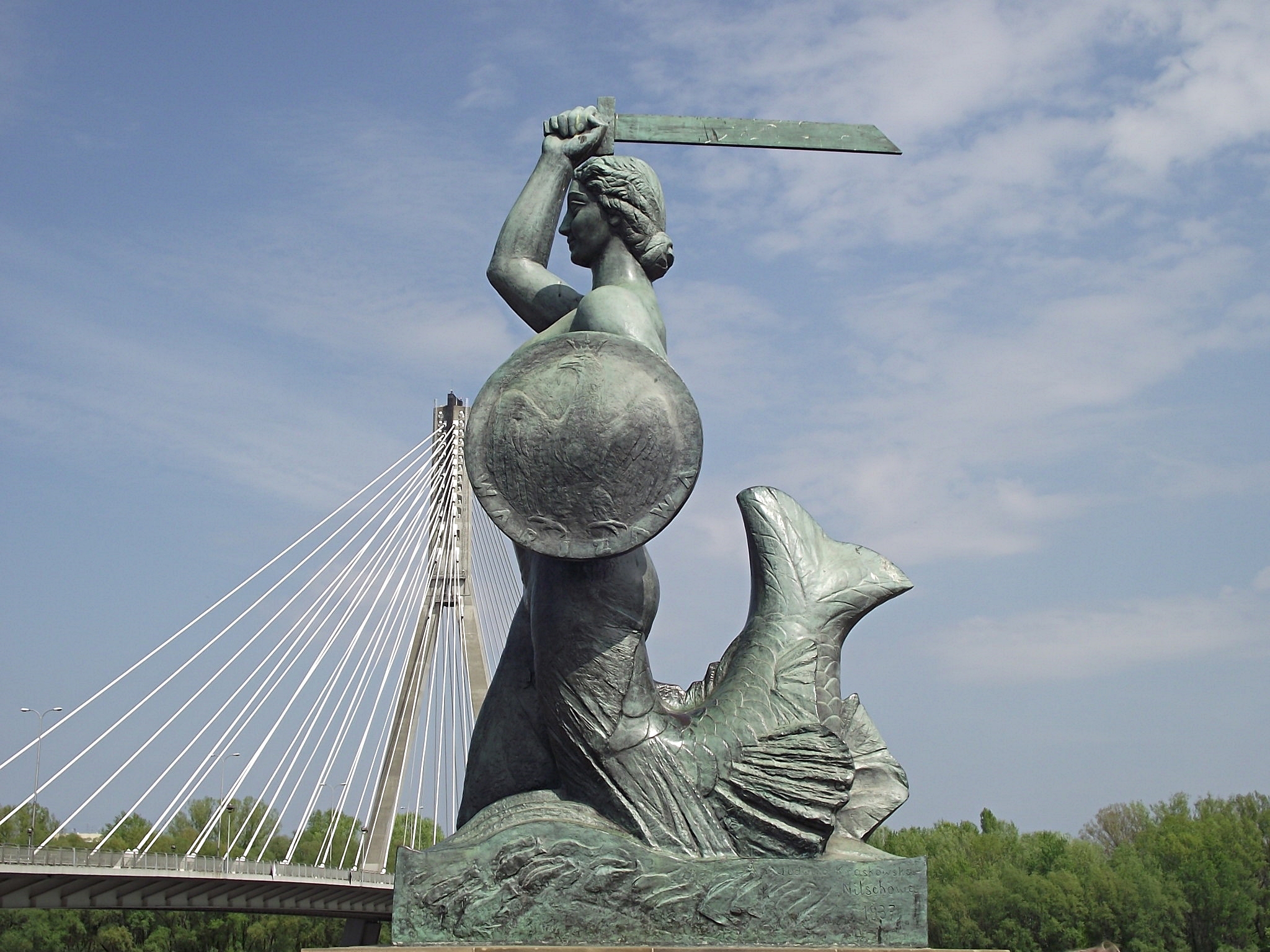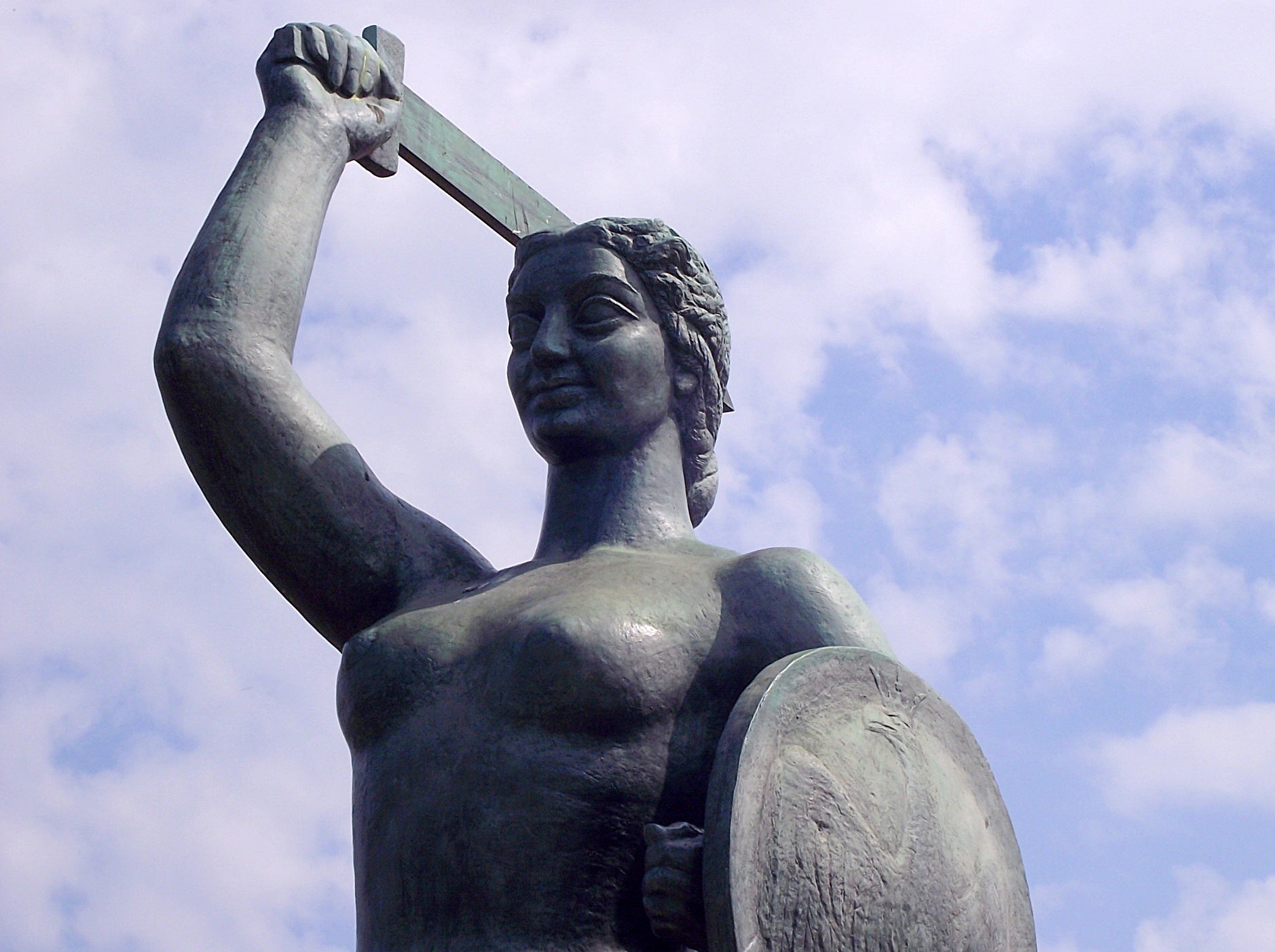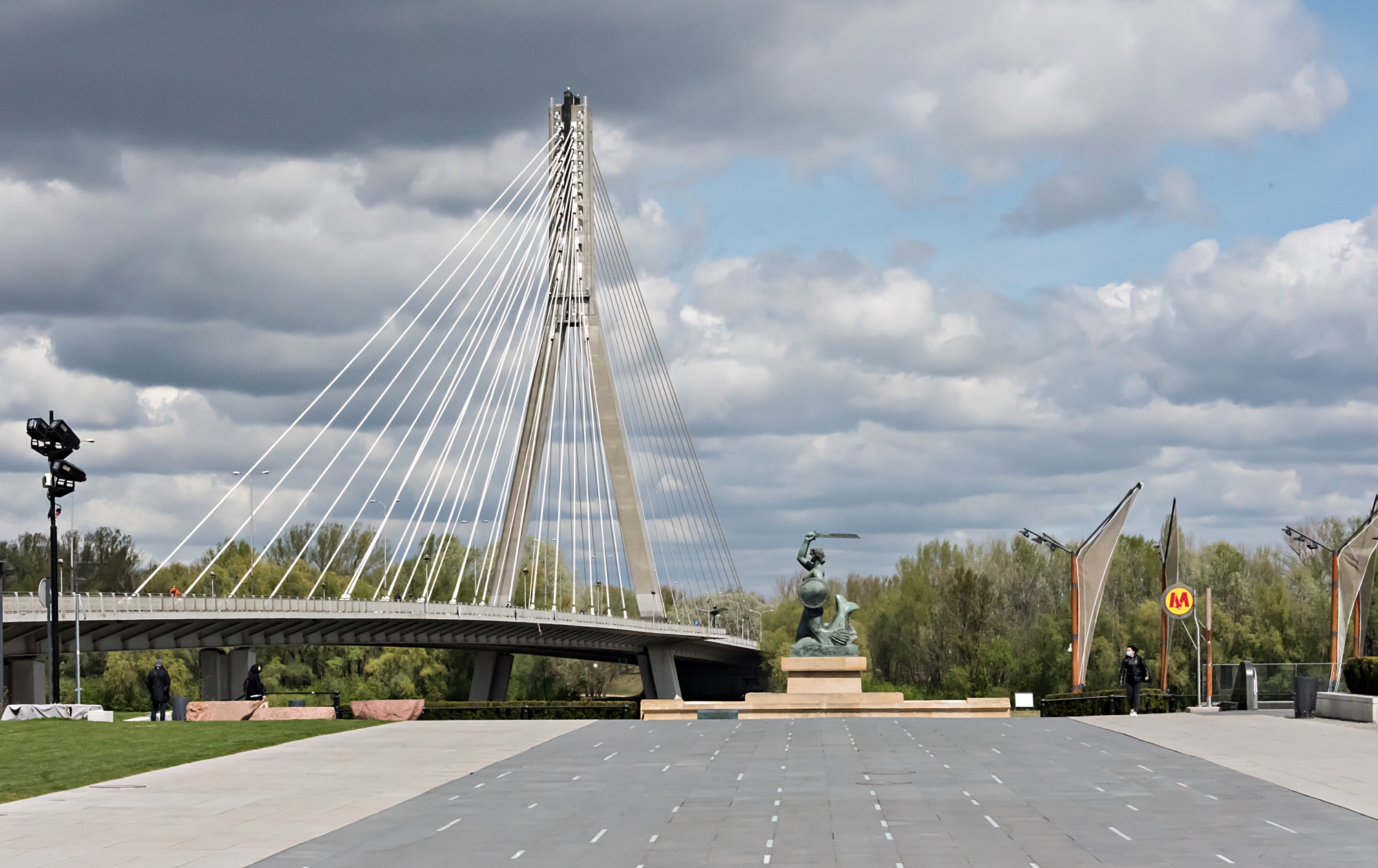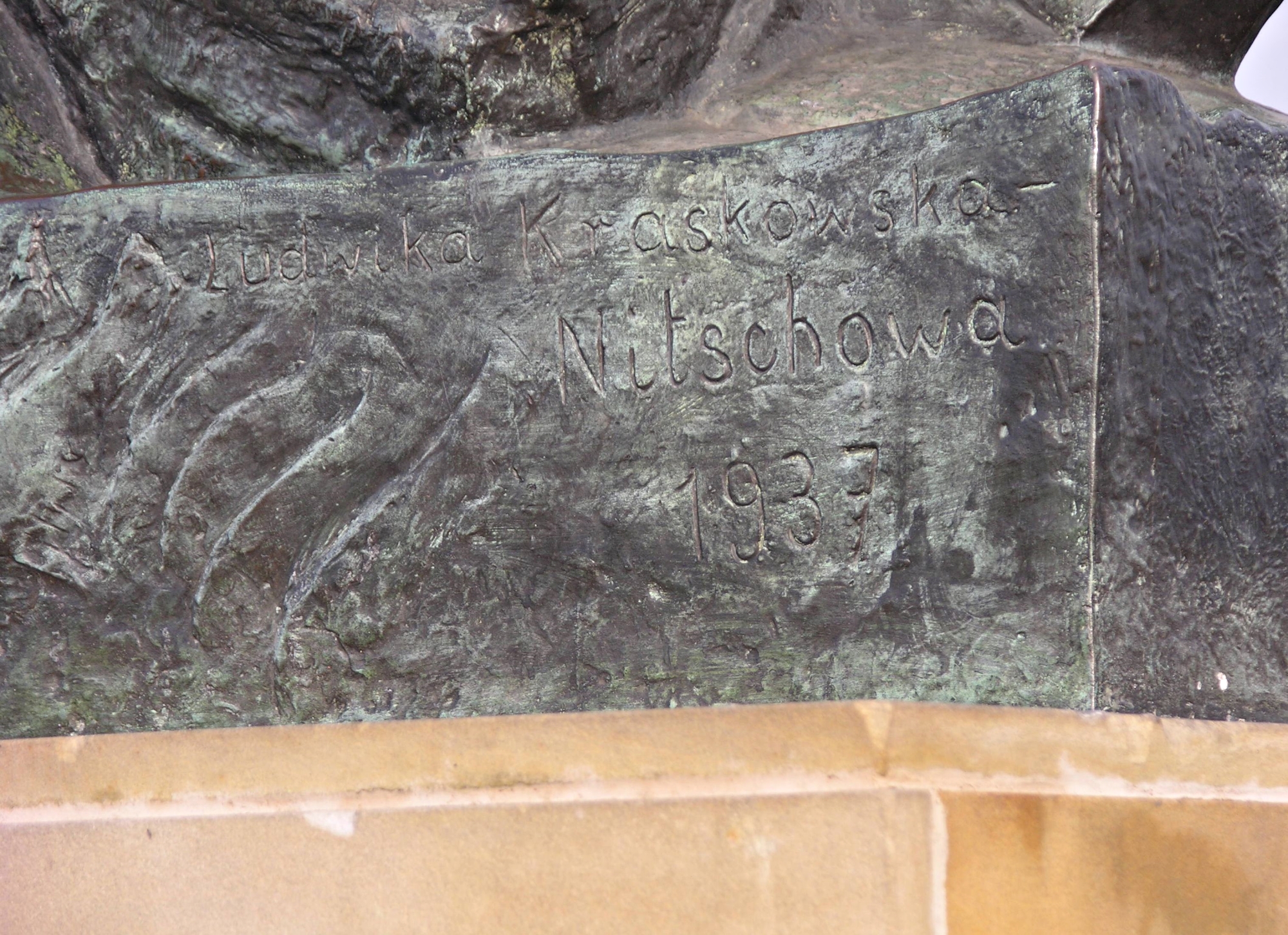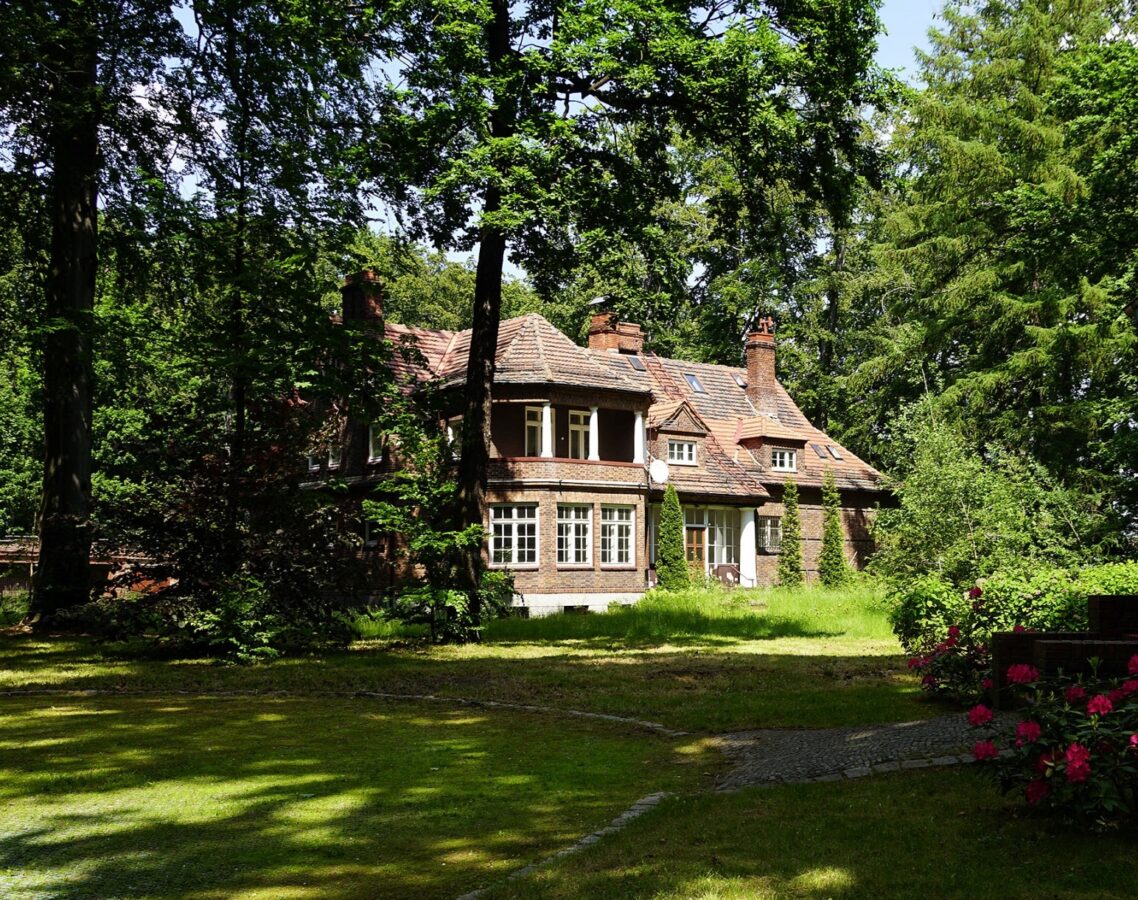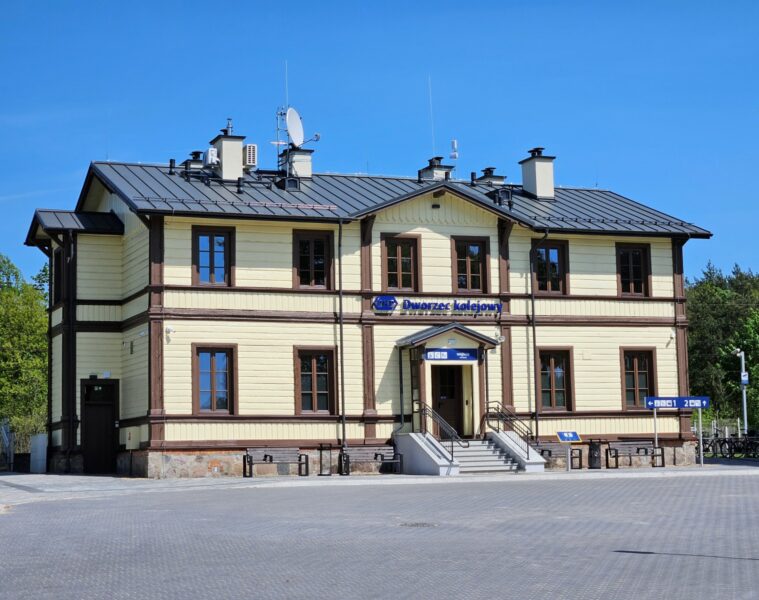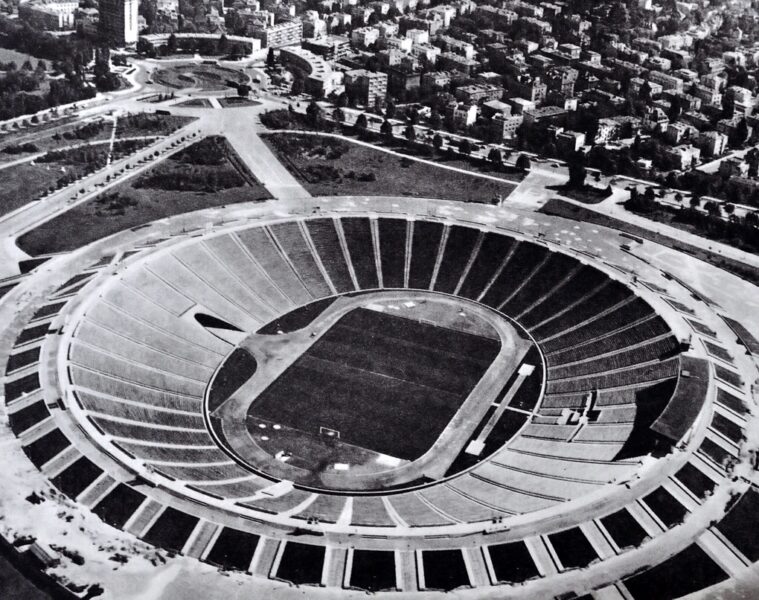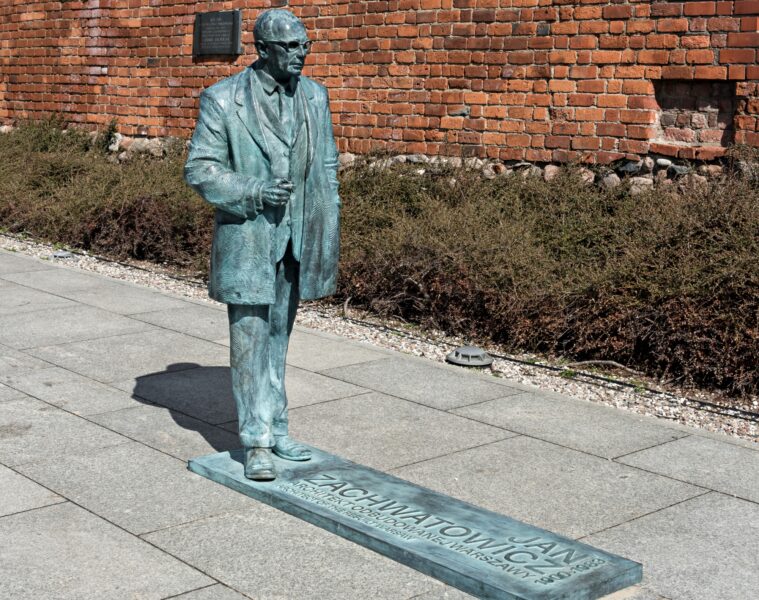The author of the first sculptural image of the Siren – a symbol of Warsaw – was Konstanty Hegel. He created it as the culmination of work on Henryk Marconi’s waterworks bringing water to the Old Town, among others. 85 years later, a monument designed by Ludwika Nitschowa was erected at Wybrzeże Kościuszkowskie Street, right on the banks of the Vistula River. The Mermaid Monument was created on the initiative of the city’s mayor, Stefan Starzyński, and was intended to commemorate the legend of Warsaw’s uprising and to contribute to enhancing the aesthetics of the Vistula boulevards.
The original concept was to place a 20-metre-tall monument made of green glass on a pillar in the middle of the Vistula River. However, it proved too costly and technically difficult to implement. Eventually, it was decided to make a traditional monument on the riverbank.
The monument today. Photo Hrs Poland, CC BY-SA 3.0, via Wikimedia Commons
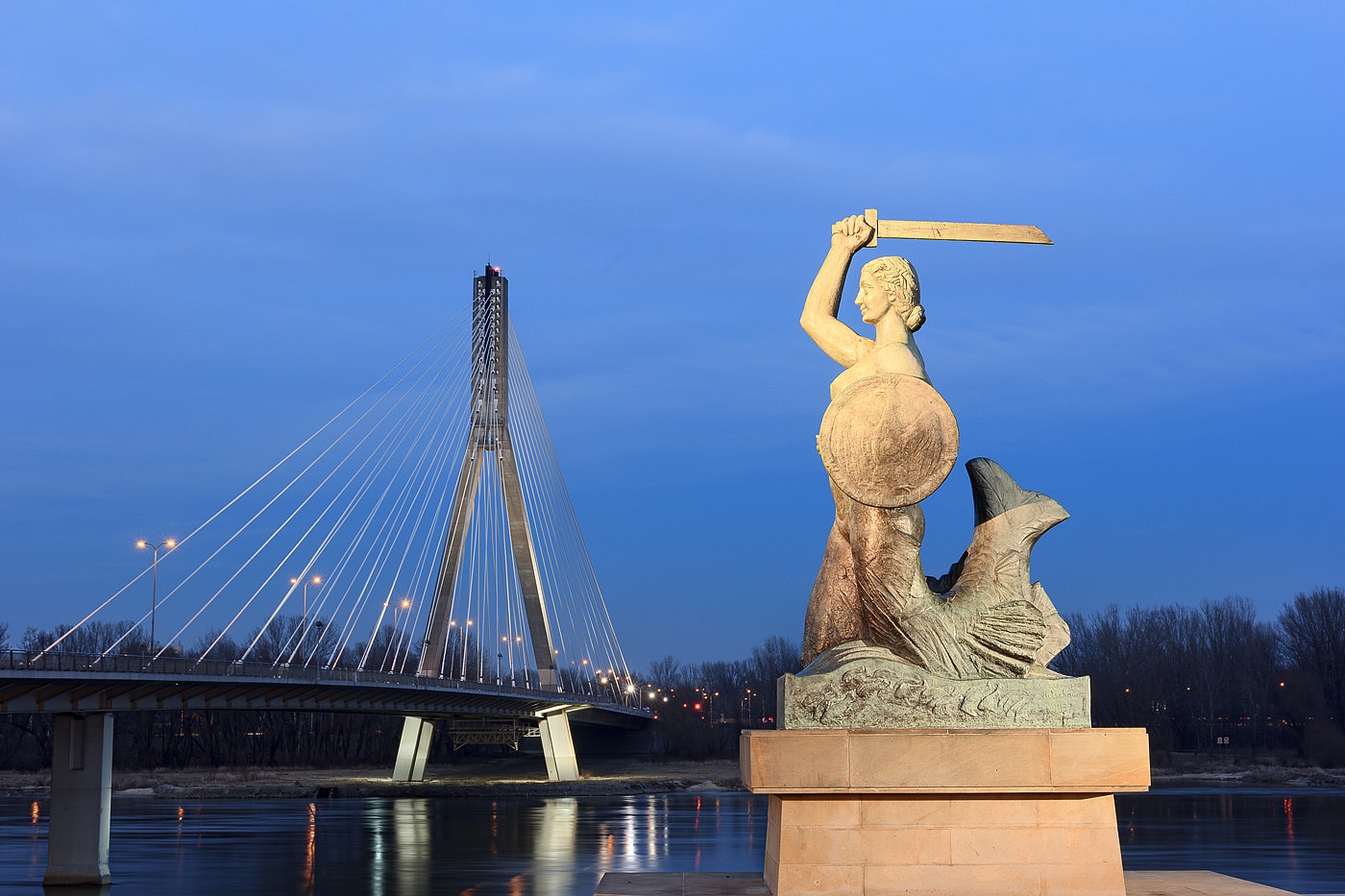
Work on the sculpture lasted several months, probably from the turn of 1936 and 1937. Krystyna Krahelska, a student of ethnography at the University of Warsaw, posed as a model for the head and body of Nitschowa’s mermaid. The sculptor was impressed by her stocky physique and her Slavic, almost typically Polish type of beauty. Krahelska posed for her in a kneeling position, holding a sword in her right hand. The student died a heroic death during the Warsaw Uprising in 1944. The 2.75-metre-tall sculpture was cast in bronze in 1938 at the Łopieński Brothers workshop at 55 Hoża St. Because of the size of the sculpture, it was cast in parts which, after being smoothed and refined, were assembled with screws and finally patinated.
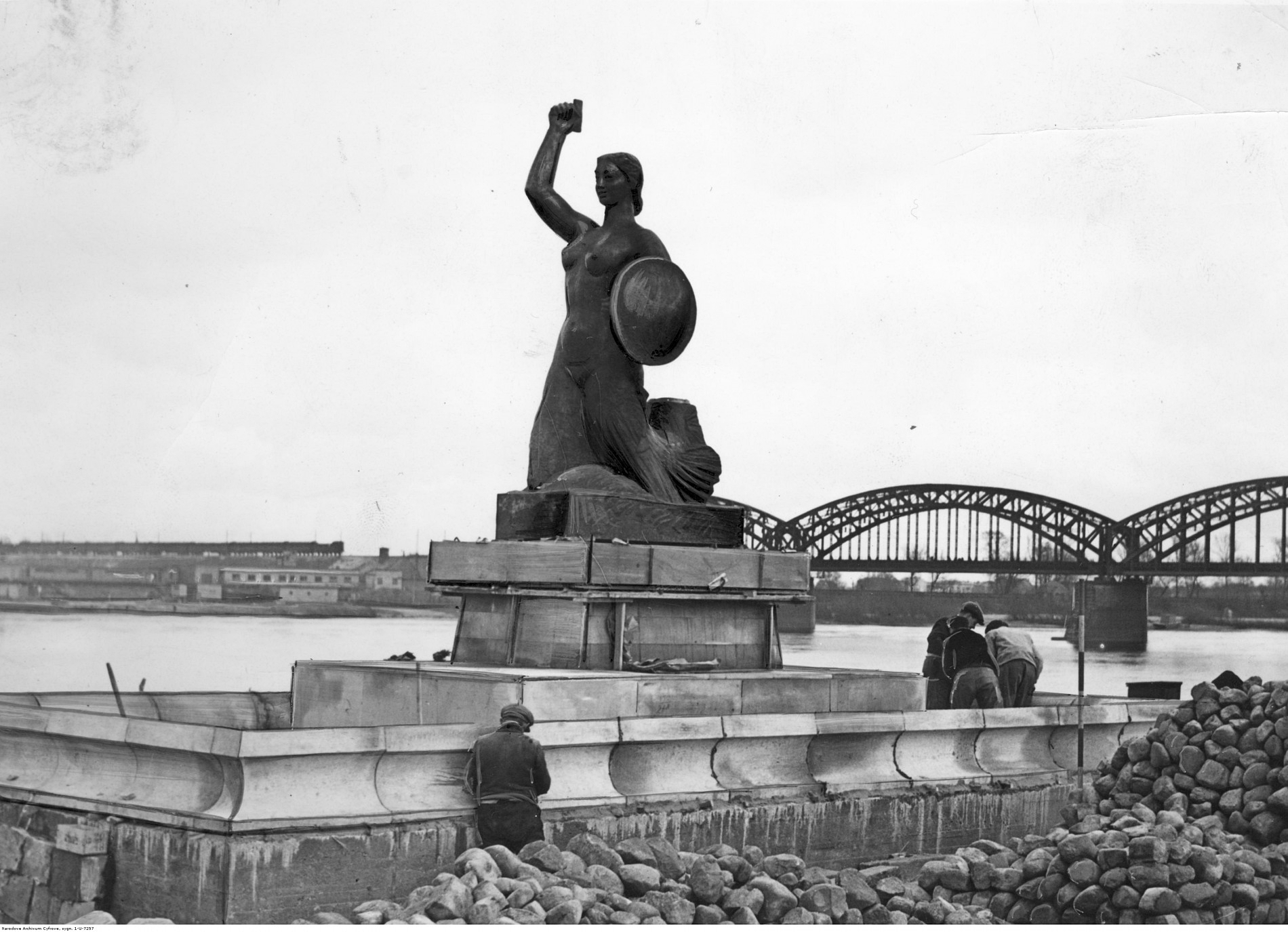
The sculpture depicts the figure of the legendary Siren. Her hair is gathered in a bun at the nape of her neck. Her gaze is directed to the north and her strong female body is shielded by a round, slightly convex shield held in her left hand. The shield bears the image of a crowned eagle with the inscription ‘Warsaw’ running around it. In her other hand she holds a sword raised high. The background to the sculpture is the river and the trees on the Praga bank. The whole stood on sandstone blocks. The monument was erected on Wybrzeże Kościuszkowskie Street at the end of Tamka Street, parallel to the Vistula current, at the beginning of April 1939. The site was chosen by Stefan Starzyński with his advisors and Ludwika Nitschowa. This location was to emphasise the connection between the Mermaid and the river perpetuated in the legend of the capital’s symbol. The city covered the construction costs.
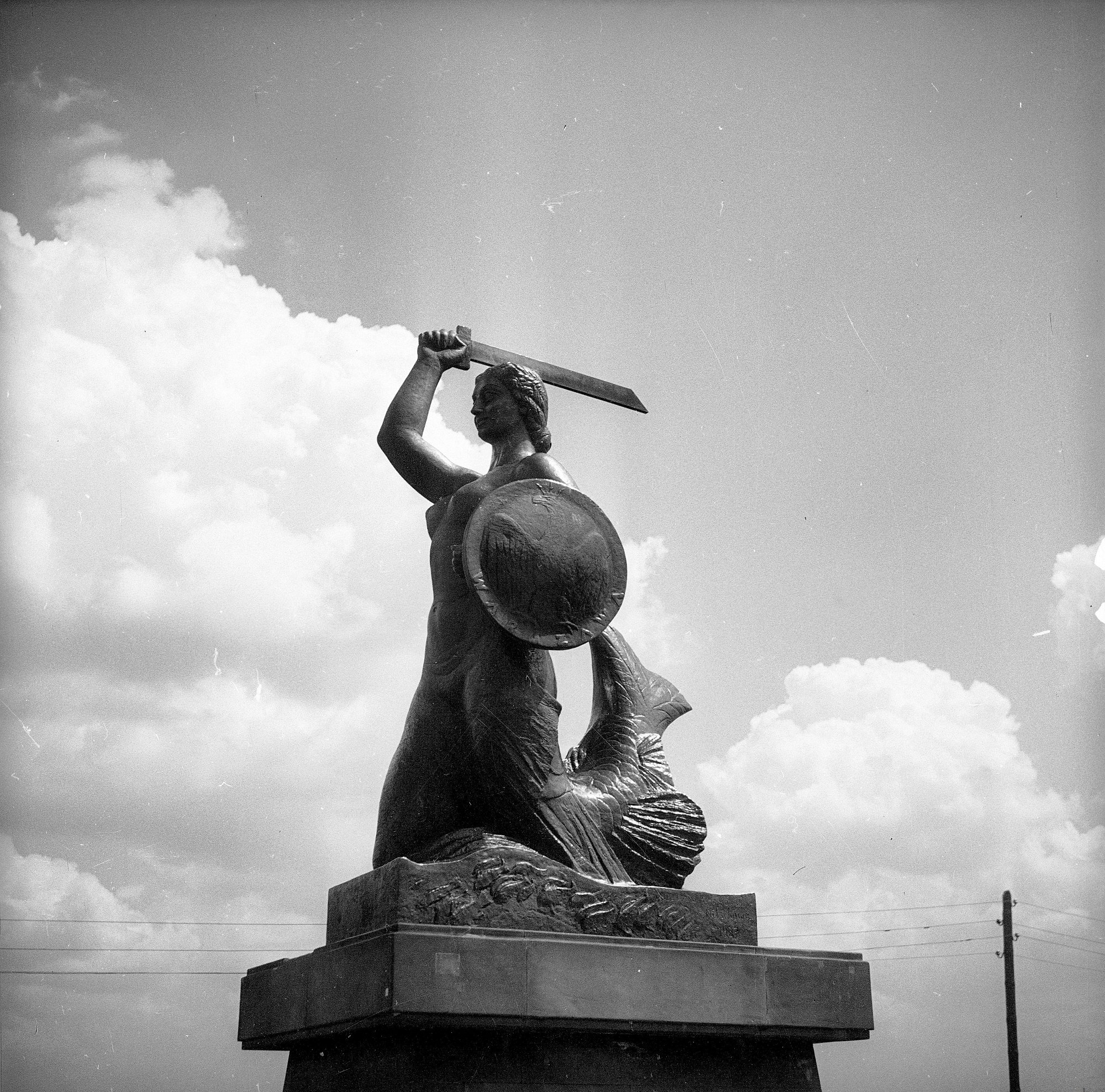
By the outbreak of the Second World War, all elements of the monument’s surroundings had not been completed, including the sculptures of seagulls taking flight, which were to be placed at the edge of the pool. Their models and casts were destroyed during the war. There were also plans to build a viewing terrace on the lower boulevard so that the Mermaid could also be viewed from the river. Both of Warsaw’s Mermaid monuments survived the Second World War, although not without damage. The one on the Vistula River was repaired in 1949 by the Łopieński Brothers’ workshop, without removing the sculpture from its pedestal. At the time, 35 bullet holes were patched up. In 1966 the monument was repaired, and on that occasion a fountain with a pool was also opened.
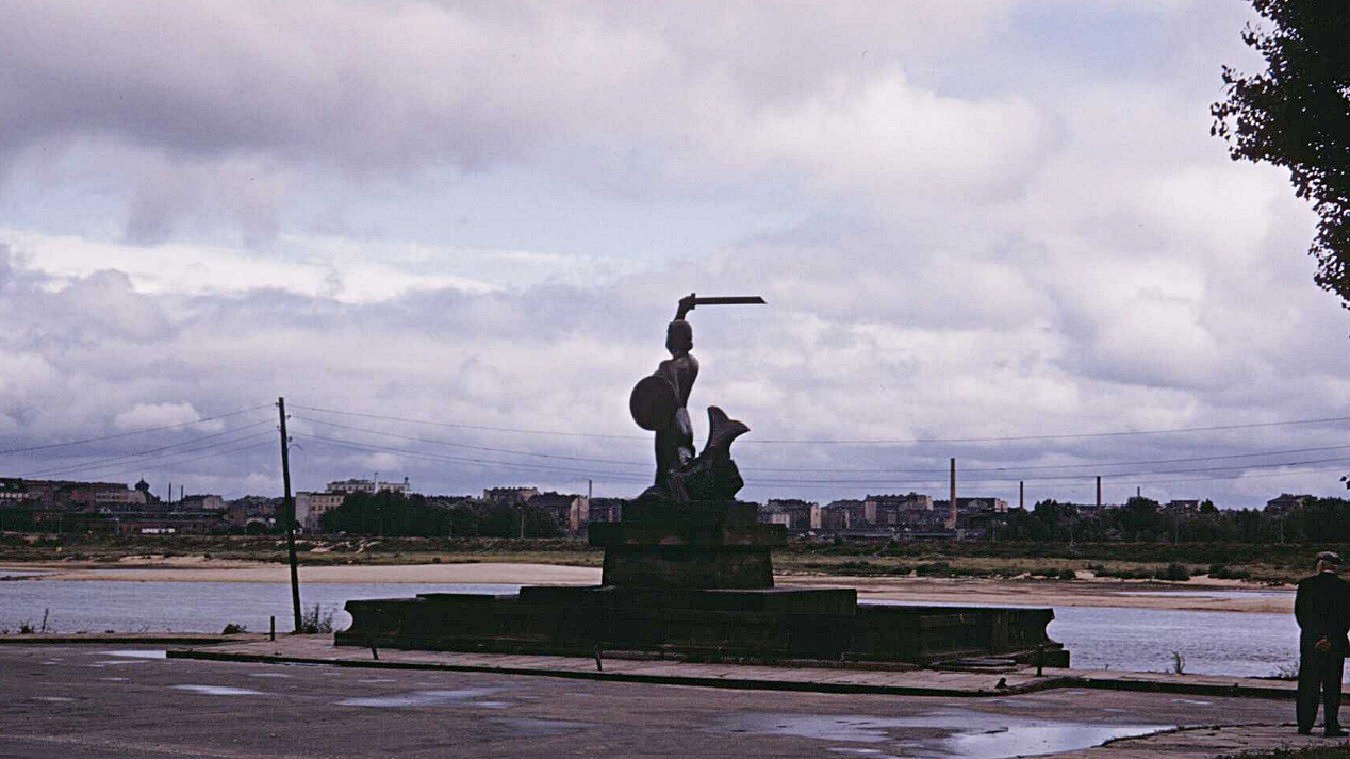
In 2000, the Swietokrzyski Bridge was built in the vicinity of the Mermaid, which became a permanent part of the backdrop of the historic monument. A general renovation of the monument was carried out in 2005. The works restored it to its former appearance, and the reconstruction and tidying up of its surroundings significantly increased the attractiveness of the place and made it one of the most important and most visited places along the Vistula River.
on 8 March 2024, activists from the Last Generation group doused the monument with paint in a bid to draw attention to climate change. Preliminary cleaning helped the Mermaid to regain its former colours, but the plinth made of fine sandstone has still not regained its original appearance. The conservation services and experts will assess what work needs to be done to restore it to its condition before the act of vandalism. The case of the destruction of the capital’s symbol has been referred to the public prosecutor’s office. Proceedings are underway for damage to the monument.
Source: warszawa.fandom.com, um.warszawa.pl
Read also: Monument | History | Sculpture | Warsaw | Interesting facts


